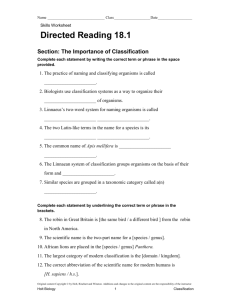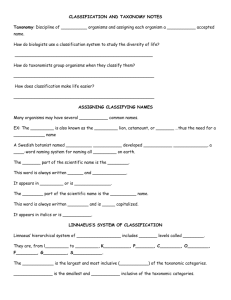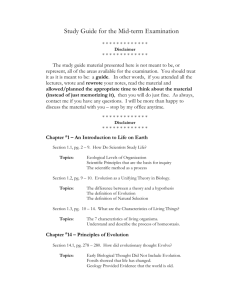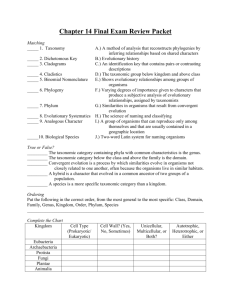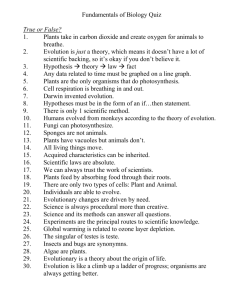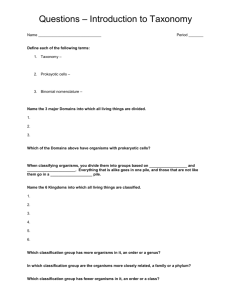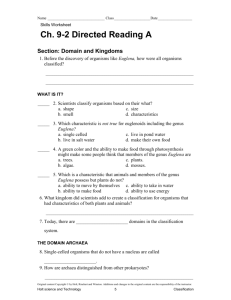Classification of Organisms Worksheet
advertisement
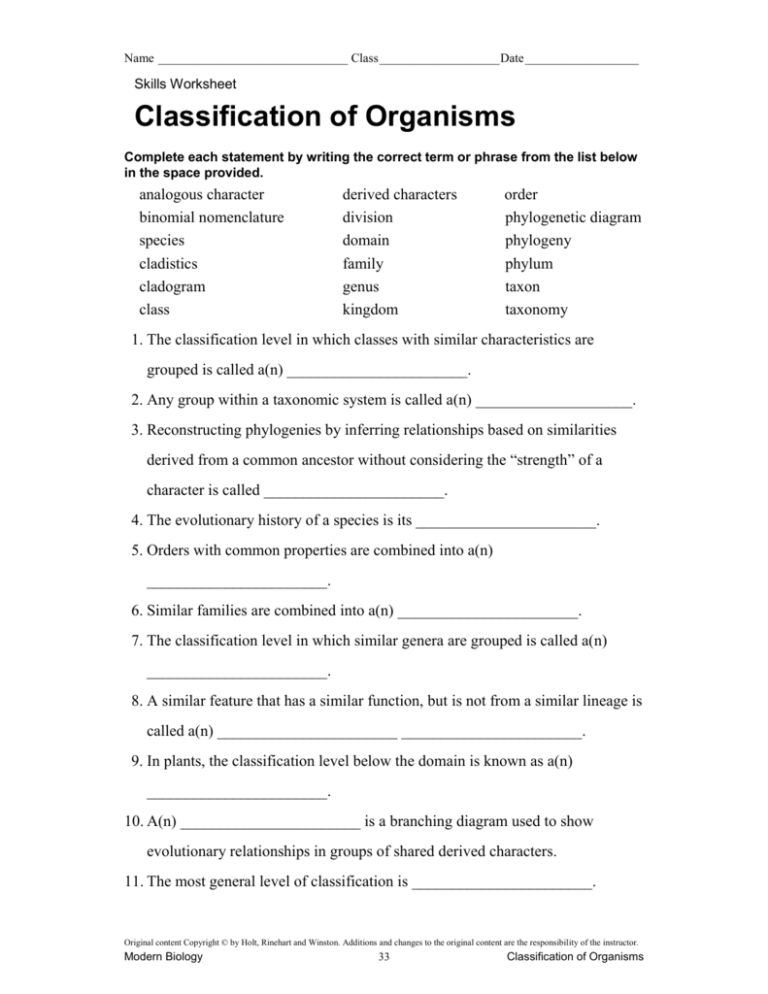
Name ______________________________ Class ___________________ Date __________________ Skills Worksheet Classification of Organisms Complete each statement by writing the correct term or phrase from the list below in the space provided. analogous character binomial nomenclature species cladistics cladogram class derived characters division domain family genus kingdom order phylogenetic diagram phylogeny phylum taxon taxonomy 1. The classification level in which classes with similar characteristics are grouped is called a(n) _______________________. 2. Any group within a taxonomic system is called a(n) ____________________. 3. Reconstructing phylogenies by inferring relationships based on similarities derived from a common ancestor without considering the “strength” of a character is called _______________________. 4. The evolutionary history of a species is its _______________________. 5. Orders with common properties are combined into a(n) _______________________. 6. Similar families are combined into a(n) _______________________. 7. The classification level in which similar genera are grouped is called a(n) _______________________. 8. A similar feature that has a similar function, but is not from a similar lineage is called a(n) _______________________ _______________________. 9. In plants, the classification level below the domain is known as a(n) _______________________. 10. A(n) _______________________ is a branching diagram used to show evolutionary relationships in groups of shared derived characters. 11. The most general level of classification is _______________________. Original content Copyright © by Holt, Rinehart and Winston. Additions and changes to the original content are the responsibility of the instructor. Modern Biology 33 Classification of Organisms Name ______________________________ Class ___________________ Date __________________ Classification of Organisms continued 12. A(n) _______________________ is a taxonomic category containing similar species. 13. Linnaeus developed a system for naming and classifying organisms, which is called _______________________. 14. A(n) _______________________ is the smallest grouping, which contains only one kind of organism. 15. Unique characteristics used in cladistics are called _______________________ _______________________. 16. The two-word system for naming organisms is called _______________________ _______________________. 17. A(n) _______________________ contains many phyla. 18. Evolutionary relationships are displayed in a branching diagram called a _______________________ _______________________. Original content Copyright © by Holt, Rinehart and Winston. Additions and changes to the original content are the responsibility of the instructor. Modern Biology 34 Classification of Organisms
